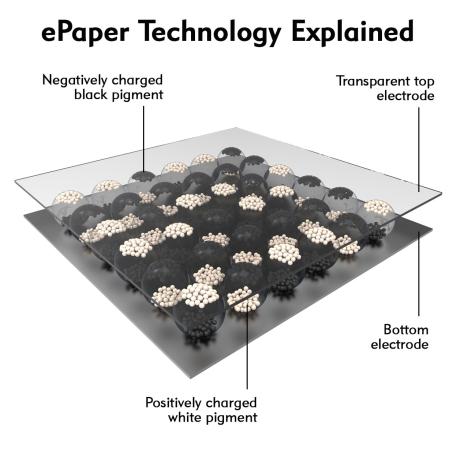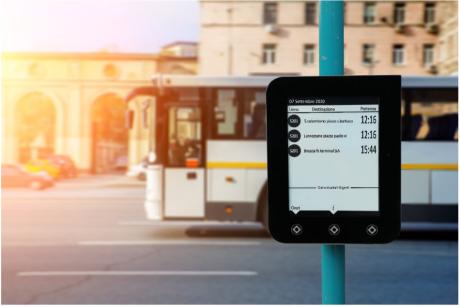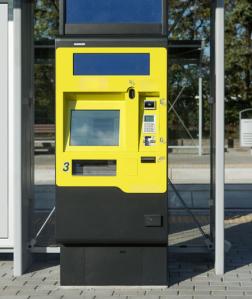Paper-like displays have been around in one form or another since the 1970s. But in the mid-1990s, a diverse group of researchers at MIT co-created electrophoretic ink technology, commonly known as electronic ink or e-ink, before going on to patent the technology and form a company, E-Ink, to commercialise it. These are the displays commonly seen in e-readers such as the Amazon Kindle.
However, e-paper technology is successfully being implemented in other applications and has many benefits for industrial devices.
What is e-Paper?
Positioned as a true replacement for paper, electronic paper displays, commonly known as e-paper, are extremely low-power, monochrome displays that closely mimic ink on paper.
The displays are reflective, with no backlight, and therefore consume very little power, meaning content on e-paper can be viewed more comfortably than most light-emitting displays – even in full sunlight and at very wide viewing angles.
Many e-paper technologies can hold static text and images indefinitely, without power, and organic or plastic electronics also make flexible e-paper possible.
The electronic ink is coated onto a layer of plastic film, attached to a TFT circuit and controlled by a driver IC to form pixel patterns, creating an electronic paper display (EPD).

Many consumers are primarily familiar with e-paper through Kindle, and other e-readers. Amazon, now the world’s largest online book retailer, showed foresight to adapt, predicting that the printed book industry would come under threat.
This opportunity, and the advantages of its E-Ink-powered e-paper display, drove the launch, and ultimately success, of the Kindle.

e-Paper for industrial applications
e-paper has also been effectively utilised in other industries – before, during and after the Kindle explosion. Our customers in industrial markets have taken advantage of e-paper technology for diverse applications, including shelf edge labels and transit network digital signage. Such deployments have become increasingly viable as high-volume consumer applications, like e-readers, have continued to drive down the cost of e-paper display technologies.
One of our manufacturing partners recently signed a partnership agreement with E-Ink, meaning it can now produce e-paper displays on its own production lines. This enables lower cost, lower volume order quantities (including MOQs), as well as higher service levels, including easier enhancements and customisations, such as touch or optical bonding. Colour e-paper is also now available to give an added dimension.
One such example of an industrial application by an Anders customer is from DataINFOMOBILITY, a division of DataMED S.r.l., an Italian engineering company with international experience specialising in the design and development of smart, real-time passenger information systems, in the form of digital signage display solutions, especially for outdoor deployment in transit networks. DataINFOMOBILITY already used a range of display solutions from Anders for these purposes – but was keen to explore the potential benefits for e-paper for such applications.
Elena Rimoldi, Export Manager at DataINFOMOBILITY tells the story:
Initially, we were a little skeptical about e-paper, because we worried that the technology may not be well adapted for use outdoors – but because no backlighting is required, only ambient light from the surrounding is needed, and they reflect light, like paper, making them very comfortable to read. Readability even under direct sunlight is excellent and good contrast from viewing at very wide angles is possible

At the same time, e-paper displays are very low power, requiring as little as 0.5 Watts per hour, with energy only required in the brief moment when the displayed text or image is updated. This means they can be self-sufficient on solar power alone, and offer virtually infinite stand-by time, even when sunlight is not available.
Between growing demand for sustainable solutions and the current coronavirus pandemic, interest in EPDs has only accelerated. “EPD solutions provide an environmentally friendly option,” explains Elena, “Because they have such low power consumption, so they can operate on batteries powered by solar panels.” And as transit companies use EPDs to replace paper schedules, it means that they can remotely update them on a regular basis, as schedules are updated, as well as incorporating real-time information and updates – which has proved invaluable during the current pandemic, where schedules have had to be more fluid than ever before, and transit operators have looked to minimise the need for staff to have to go and physically change schedules.
Elena also praised the technical support Anders was able to provide in working with DataINFOMOBILITY engineers to specify, design, customise and deliver an EPD solution that meets all the application requirements far more closely than any off-the-shelf option available directly from E-Ink.
Get in touch to discuss your display and embedded design requirements!


